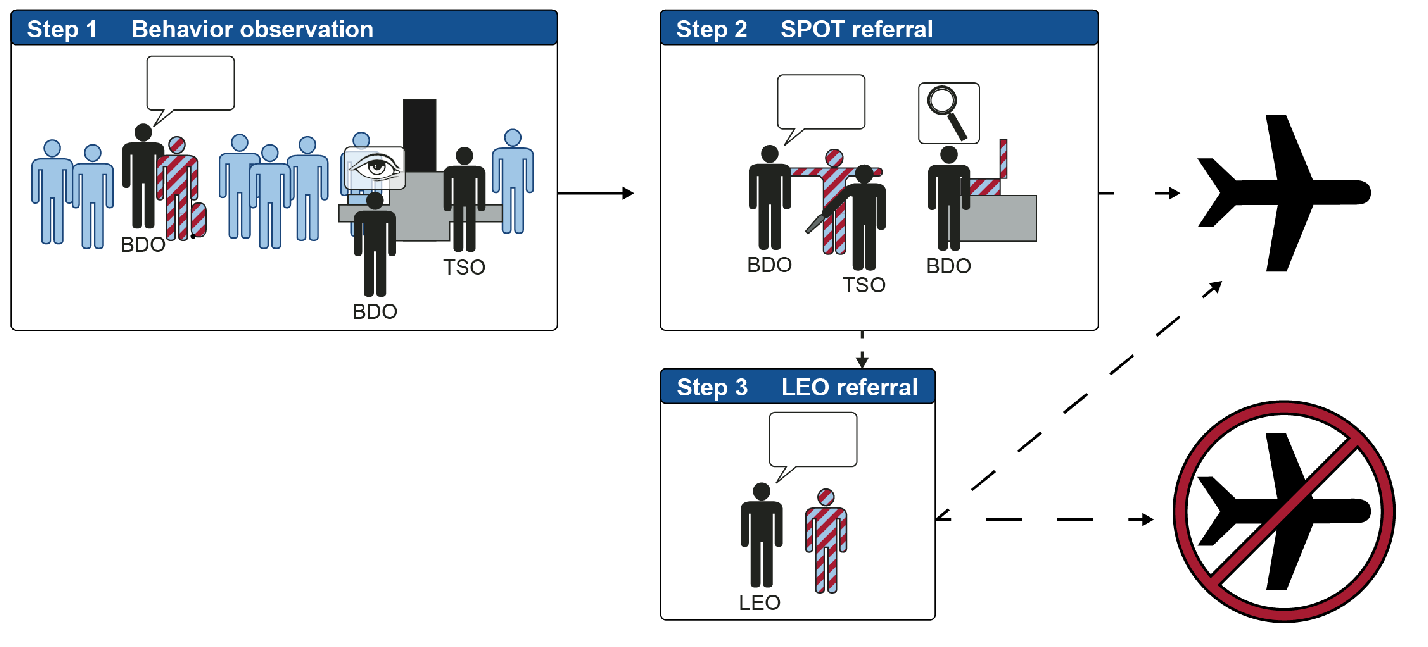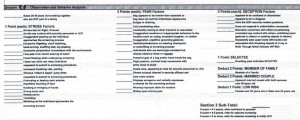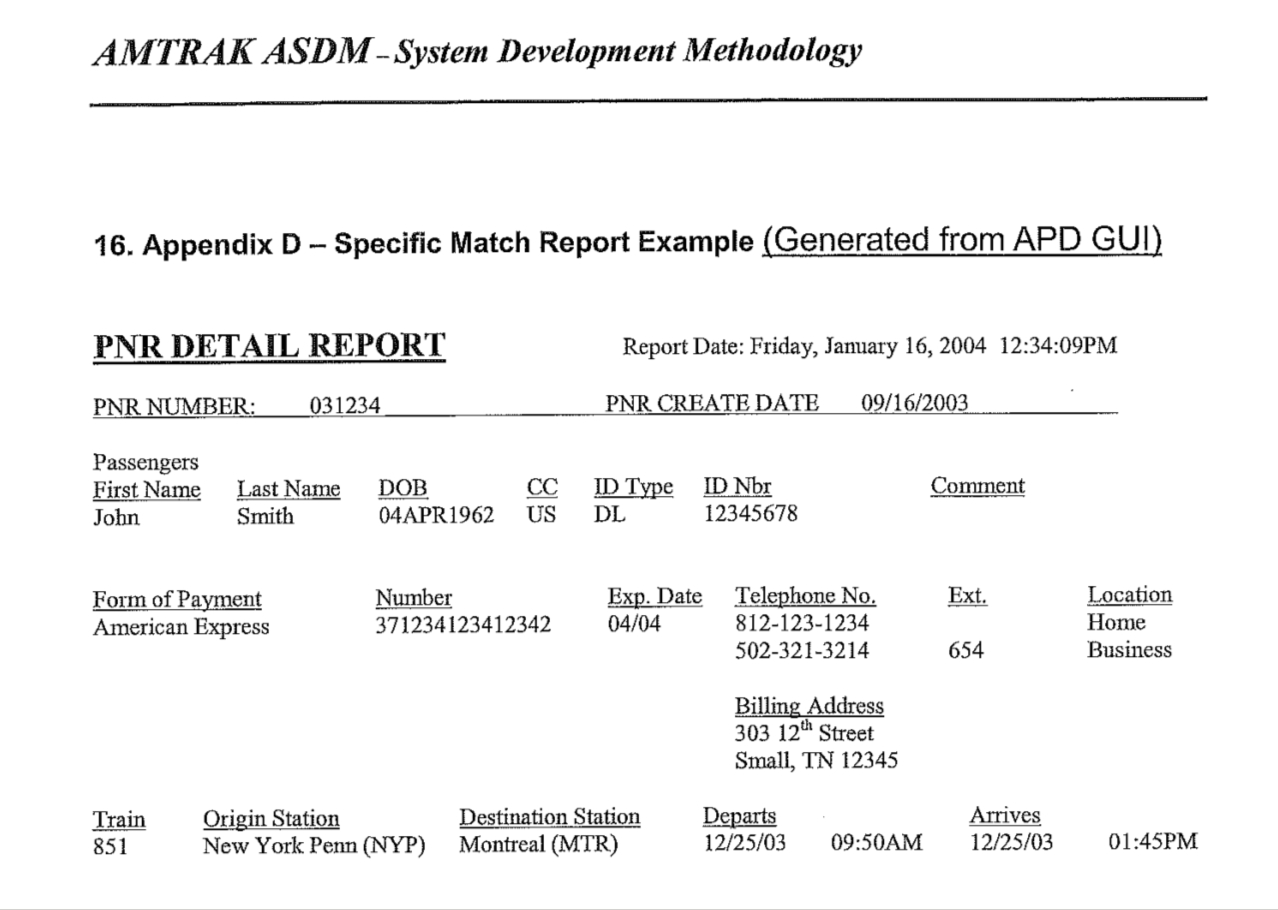You can’t tell the travelers without a scorecard
 [Point scores assigned by TSA “Behavior Detection Officers” are used to decide whether to search you or your luggage, interrogate you, call the police, or allow you to fly. (Diagram from 2013 GAO report. Click image for larger version.]
[Point scores assigned by TSA “Behavior Detection Officers” are used to decide whether to search you or your luggage, interrogate you, call the police, or allow you to fly. (Diagram from 2013 GAO report. Click image for larger version.]
The Intercept has published the scorecard used by TSA “Behavior Detection” precogs to assign points to travelers, as part of the TSA’s “SPOT” pre-crime scheme for deciding which travelers to subject more intrusive search and/or interrogation or “refer” to local police:
Whether you call SPOT and the TSA’s other pre-crime profiling programs “junk science”, “culturally biased”, or simply “unconstitutional”, it’s clear that the TSA can’t tell the terrorist travelers with or without a scorecard.
The SPOT scorecard includes pairs of, “Damned if you do, damned if you don’t,” point categories. “Avoids eye contact with security personnel or LEO [Law Enforcement Officer]”? +1 point. On the other hand, “Cold penetrating stare” or “Widely open staring eyes”? +2 points.
Disturbingly, some of the largest point values are assigned for the exercise of First Amendment rights to express opinions, ask questions, and observe what is in plain sight: “Asks the BDO [Behavior Detection Officer] security-related questions”? +3 points. “Shows arrogance and verbally expresses contempt for the screening process”? +2 points. “Scans area, appearing to look for security personnel or LEO”? +2 points.
In what appears to be flagrant discrimination against people with disabilities, anyone attempting to communicate in sign language is severely penalized: “Exhibiting hand gestures to others”? +3 points.
Part of the scorecard is broken down into “Stress”, “Fear”, and “Deception” categories. Stress and fear would seem to be natural responses to being profiled, judged, interrogated, and groped by government agents in cop-like uniforms who claim discretionary and deliberately unpredictable power to stop us from exercising our rights. What traveler anywhere in the world doesn’t tense up when they are stopped at a checkpoint, and breathe a sigh of relief when they have made it through?
Points are also assigned for attributes having nothing to do with these factors, and which cannot lawfully be construed as constituting a reasonable basis for suspicion sufficient to justify search or detention.
Are you one of a party of, “Males traveling together who are NOT part of a family”? +1 point. Take that, pairs of traveling salesmen, and pairs of Mormon Elders on a mission! Do you appear to be a “Member of a family”? -2 points. What’s a “family”? And how can the TSA tell?
Possession of duct tape “which the passenger has no apparent reason to possess”? +1 point. Isn’t the reason to carry duct tape that you never know for what purpose you will need it?
Cash is considered presumptively and for outbound international travelers conclusively suspicious. Possession of, “Large sum of monies leaving U.S.”, or “Large sum of monies with no apparent reason to possess”? Automatically notify a law enforcement officer.
Some of the scoring categories appear to be purely cultural or fashion bigotry: “Face pale from recent shaving of beard”? +1 point. Others show age and/or gender bias: “Facial flushing while undergoing screening”? +1 point. So much for any woman who happens to have a hot flash at a checkpoint. “Apparent married couple with both spouses over 55 years old”? -2 points.
The Intercept quotes two unnamed former TSA “Behavior Detection Officer” managers. One says the scorecard is, “designed in such a way that virtually every passenger will exhibit multiple ‘behaviors’ that can … justify BDO interaction with a passenger. A license to harass.” Another describes the SPOT porgram as, “Bullshit. Complete bullshit.” We couldn’t have said it better.

